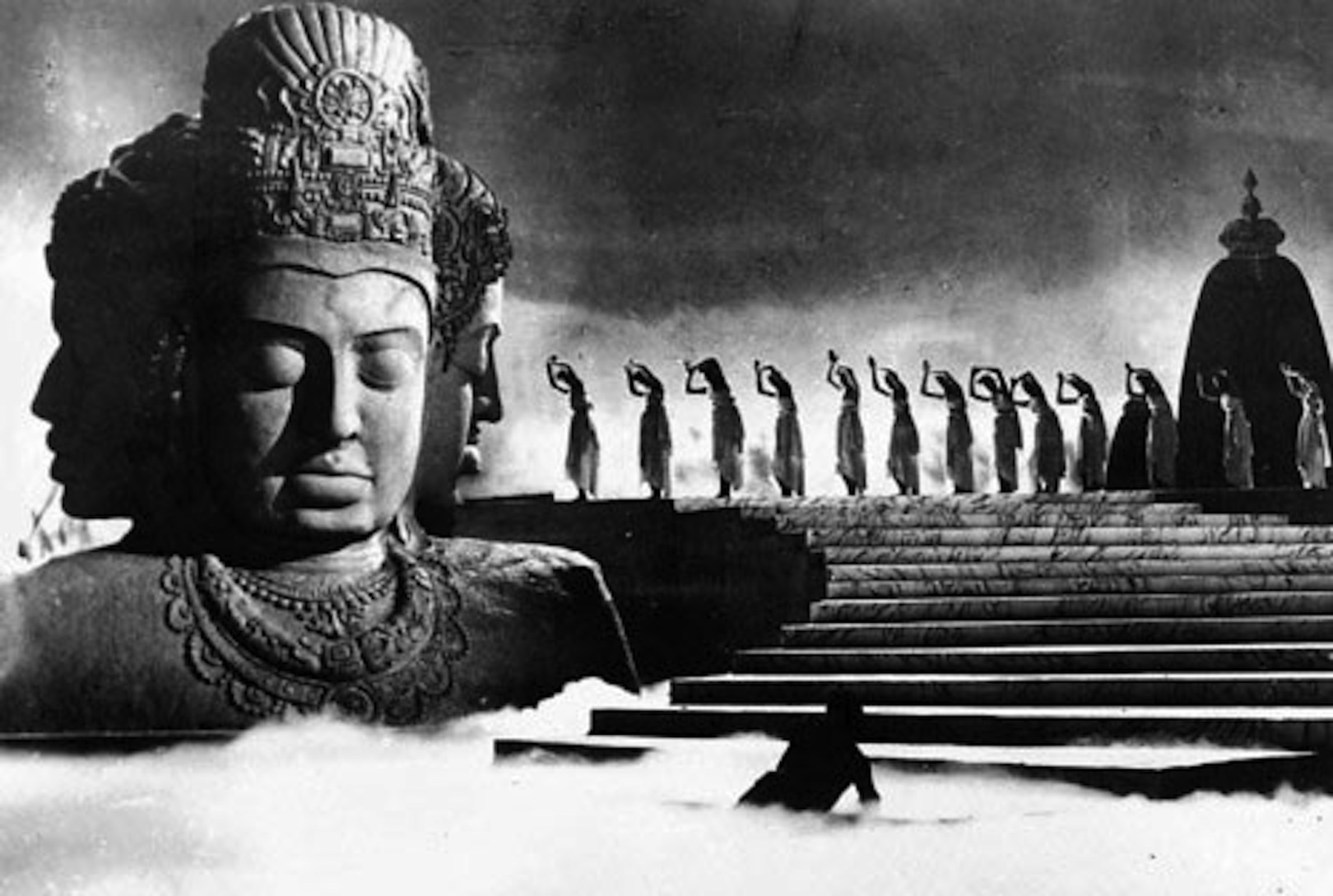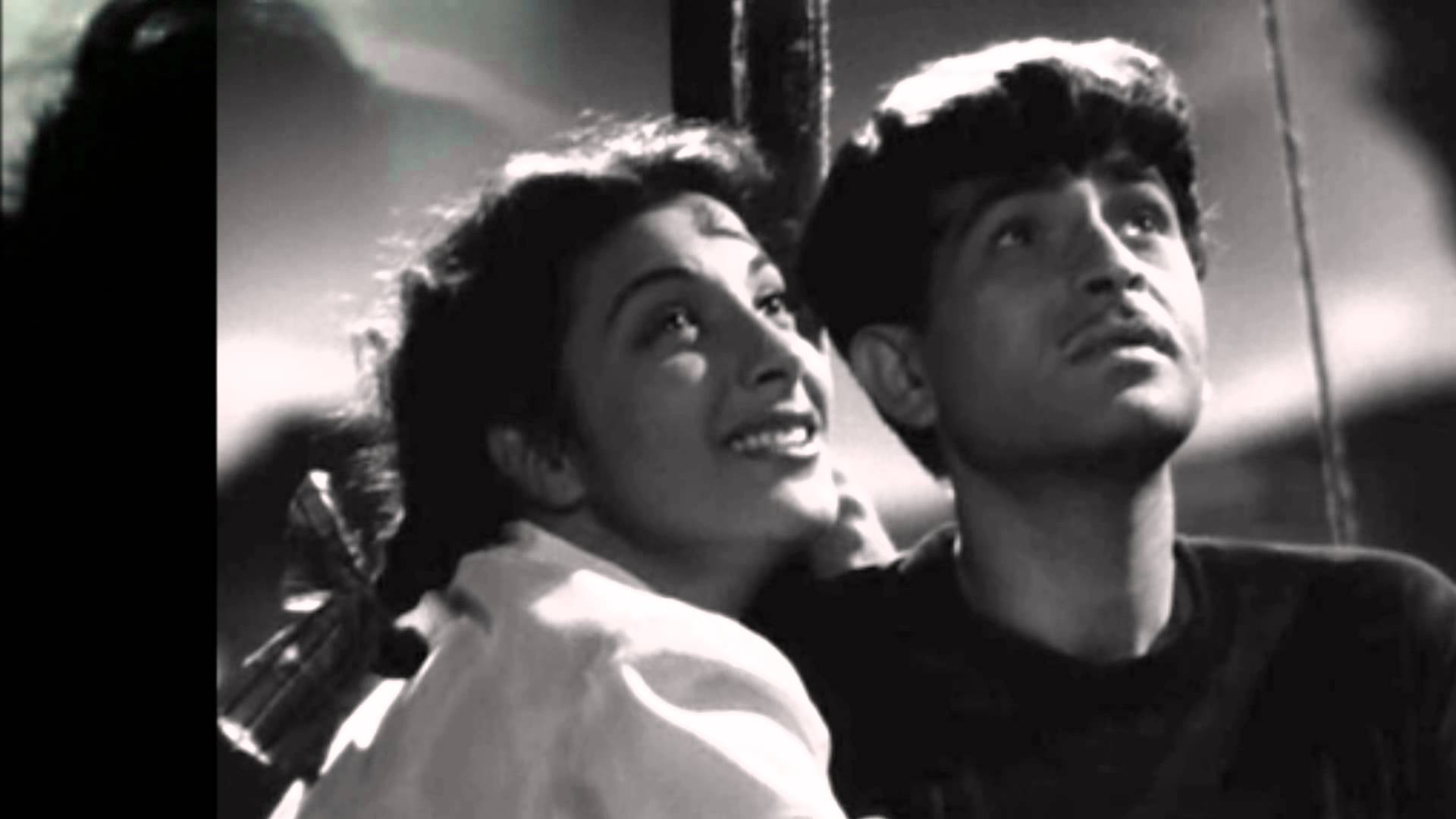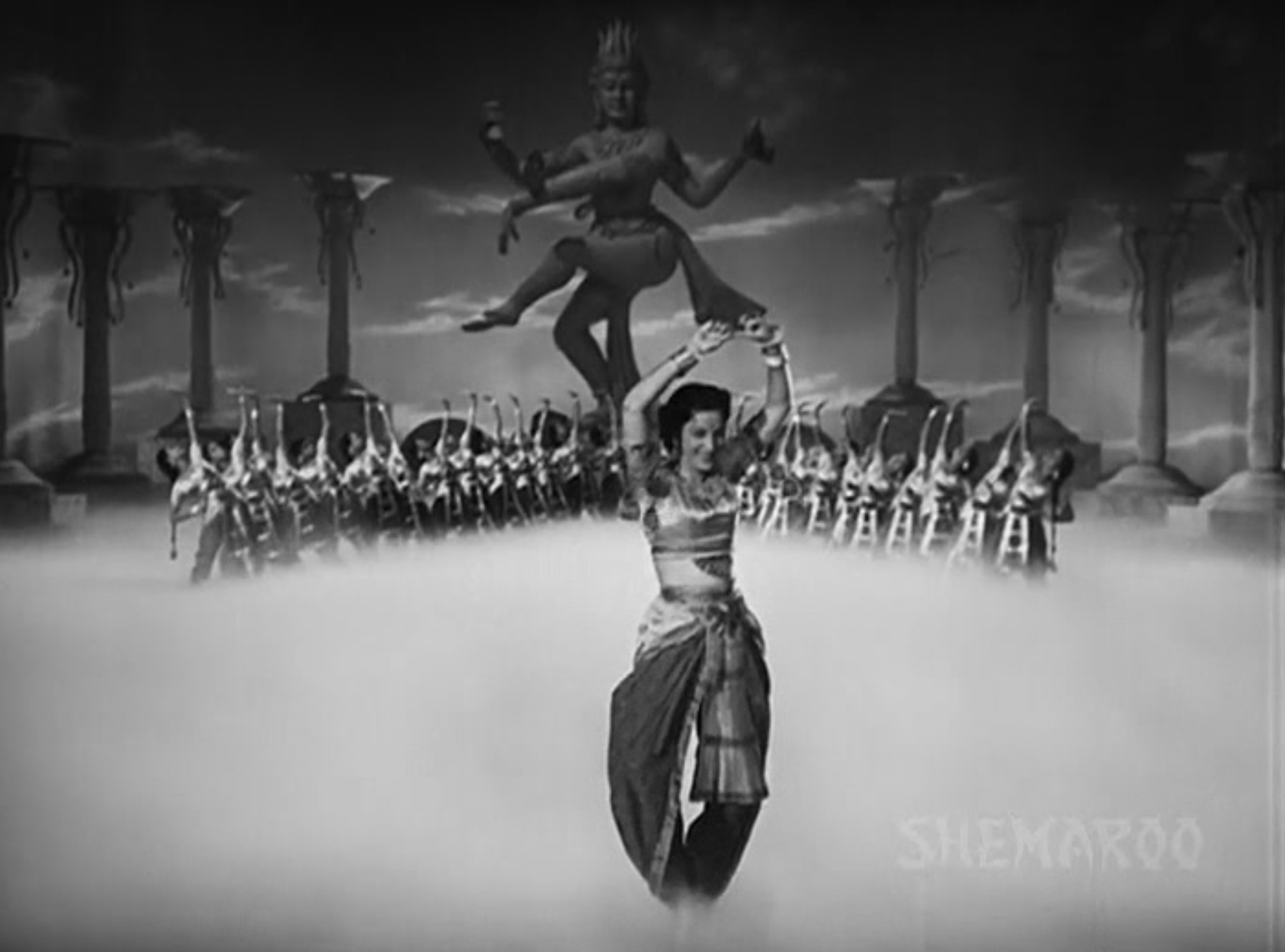A stern judge, obsessed with questions of lineage and social order, casts out his pregnant wife for supposed infidelity. A fatherless child born to the slums falls in love with a girl impossibly out of his league, only to meet her again under much different circumstances as an adult. Class and caste collide, amid expository songs, Chaplin references, scandalous sexuality, generational conflict, mythic invocation, and an elaborate dream sequence. Raj Kapoor’s 1951 mega-hit Awaara set the stage for many Bollywood productions to follow.
Kapoor was only 27 when Awaara was released, “not too long after 1947 and at a time when the business of Independence (and of course Partition) [was] still unfinished.” He’d go on to become one of the seminal and most beloved figures in Indian cinema, but in 1951, Awaara was just the third release from his newly-minted R.K. Films. The timing informs its themes and helps explain its incredible international success, but also underscores the ambition of Kapoor’s vision.
Awaara presents an elliptical narrative, told mostly through flashback and digression. A frame-story functions as a unifying thread; we begin near the end and move backward, before circling around to the present and closing the days to come. (The frame-story technique is especially relevant, given Awaara‘s self-conscious similarity to the Ramayana, one of the earliest frame-stories that exists.)
Kapoor shares a name with his protagonist, and we begin with Raj’s trial for the attempted murder of the illustrious-looking Judge Raghunath (Prithviraj Kapoor). Our expectations shift almost immediately, though, as a beautiful defense attorney named Rita (Nargis) begins interrogating the judge on the stand. It’s a deft touch. We question who exactly is on trial here, and gradually discover there are connections, for the moment only implied, between each of these three characters. Awaara will spend the next three hours teasing those out.

To make a very long story short, Raghunath was married to the virtuous Leela (Leela Chitnis), but his draconian position on criminality came back to haunt him. The judge sentenced a man named Jagga (K.N. Singh) to prison for a crime he didn’t commit, based solely on class prejudice; the jailed would become, predictably, a notorious bandit. Seeking revenge for this original sin, Jagga kidnaps Leela and intends her harm. But upon discovering her pregnancy, he comes to a different plan: he will allow the judge to think his wife was assaulted (a crime that falls on the woman’s honor), and then take vicarious pleasure in the unborn son’s misfortune, which will disprove the pompous judge’s notions of moral predestination. Jagga will effectively play with the fates of man to prove a point, like one of the guys from Trading Places, except more prone to knifing.

In due time, Raj develops a lifelong adoration for his classmate Rita, but his attempts at courtship and decent living are foiled at every turn by an unforgiving society. The nature vs. nurture themes play out against the backdrops of both slum and high society, with Raj eventually embracing his outcast status … to a point.
He’s more lovable than ruined (usually), facing hardship with a wink, a skip, and a pratfall (though Awaara gets much darker than the Chaplin films Kapoor clearly adores). Jagga, Raj’s Fagin-like surrogate father, brings him into a life of crime, while Raghunath, actual patriarch, remains disastrously oblivious to his paternity. A reckoning is coming.
Throughout Awaara, there are echoes of both earlier Russian films, with their evocative editing and denunciations of social oppression, and contemporary Italian neorealism, particularly doomed odes to the urban preterite like Shoeshine and Bicycle Thieves (though with significantly more dancing than either of those).
Kapoor and DP Radhu Karmakar film the rainy streets, the romantic boat rides, and the perversely ornate interiors of the wealthy with an eye for the emotive image — a scorned thief hanging out with a dog, both lit by a circle of streetlamp; Raghunath alone in his palace of shadows; Raj and Rita’s reflections in the water with the moon behind them. To say nothing of the elaborate dream sequence.

Awaara is excessive on every level. Its visual overload peaks during the dream sequence, but it’s the film’s defining characteristic more generally. This is an ode to Chaplin, a dour social realist agitation, a bouncy musical with a remarkable (and unfortunate) similarity to Carousel, the sort of film that can transition from quiet melodrama to an actual battle between Heaven and Hell without seeming forced.
It was also the sort of film that resonated far and wide: it was rapturously received in Russia and China, where audiences related to it intensely. Russian authorities found it ideologically satisfactory. Its theme, Awaara hoon, was apparently Mao’s favorite. Jia Zhangke sings its praises (and in The Platform, characters are shown watching Awaara.) In 2015, a contestant on a Turkish reality TV show made it his own. Something struck a chord.
Yet, despite the film’s international success, Kapoor’s breakthrough remains resolutely Indian, not just in location photography or technique but text. One critic finds a material-historical reading in the question of paternity and social order:
Prithviraj [as the judge] also represents the bourgeois bureaucratic order of the newly emergent nation-state that cancels out the greater ‘Independence’ promise of profound social upheaval and true liberation from class/caste struggles and so forth. His perspective testifies to an ‘older’ obsession with bloodlines, genealogical purity, and colonial obsession with legal frameworks. His class is that which historically transcended the pre-Independence/post-Independence divide, the very social grouping which stunted the true empowerment of the disenfranchised in a new nation that promised precisely this.
Another emphasizes the mythic:
A thought that occurred to me … was that Awara picks up where the Ramayana ends. The film’s “prologue” has Prithviraj Kapoor—playing Judge Raghunath—facing a terrific reversal in which he stands trial at an attempted murder case where he is actually supposed to be the victim and Raj Kapoor the accused. Raghunath’s ward, a lawyer played superbly by Nargis, defends Raj Kapoor and confronts the gargoyle-like Raghunath (the regretful and brooding Ram in this film) for years ago expelling from his household his very own “Sita”, a wife he believes to have been raped and impregnated with a child he imagines to be the spawn of the “Ravana” of the story, here in the form of Jagga, a vengeful bandit. So it is not Sita who is on trial in Awara’s Ramayana commentary, nor even the perceived “seed” of Ravana (Raj Kapoor) but rather Ram himself, who here, in this moment, becomes “the accused” for his iconically faithless gesture.
Watching Awaara today, without anything approximating familiarity with these contexts, I’m most struck by the film’s ambition. I have no doubt that both these readings have a solid basis — “it can be two things,” as we say. Kapoor’s film synthesizes any number of influences but places them in a unique framework that draws equally on sacred allusion and anxieties animating the moment of its production. And then, he adds spectacle, humor, tragedy, and song.
That’s a lot of lifting for any film to accomplish, a lot of contradictory impulses pulled together into what is, ultimately, an enormously crowd-pleasing piece of entertainment. Awaara‘s success is like a magic trick, or like one of Raj’s sleights of hand. Kapoor would go on to a storied career, but the debut of his Tramp character, and the winding story of his trials and tribulations, would cement his legacy right from the start.

